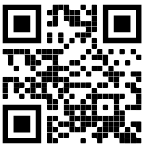Content Management
CMS stands for Content Management .
A CMS can have multiple meanings depending on the scenarios and the person’s or project objectives.
The most advantage of content management (CMS) has a complete process and rich features. Posts can be categorized and users can edit them individually.
CMS may be various, from a blog management system, a news management program, to a comprehensive article management system, all of them can be called a content management (CMS) which manage all kinds of contents, such as: company information, service classification, product manuals, security assurance, technical instruction, sales service, image files and so on.
Our course of web development industry is teaching about CMS (Content Management)
In this course, We’ll put the emphasis on the common CMS definitions, The detail of the system design, also we can training how to modify and all in the CMS website.
1. Introduction
1.1 What is a Content Management
1.2 Content Management types
1.3 Hosting a Content Management Website
2. Content Management website strategy
2.1 Gathering Customer Requirement for Content Management
2.2 Making SQL database for Content Management
2.3 Database design guidelines for Content Management
2.4 Using programming tools to assist in development of a Content Management website
3. Front Page Design of a Content Management website
3.1 Creating homepage and retrieving data from database
3.2 Creating Category pages and retrieving data from database
3.3 Creating Content page and retrieving data from database
3.4 Creating Post page and retrieving data from database
3.5 Creating Register and Login pages and retrieving data from database and saving data to database with SQL
4. Posts Management
4.1 Understanding posts
4.2 Developing post management pages with following functions:
• Using categories and tags
• Using revisions
• Publishing and scheduling posts
• Truncating posts and using excerpts
• Publishing and scheduling posts
• HTML editor to format post
• Creating and editing links
5. Media Management
5.1 Understand media elements
5.2 Developing media management pages with following functions:
• Adding images to posts and pages
• Moving an image to a new location
• Creating image galleries
• Using featured images
• Adding images from other sites
• Adding content from YouTube and similar sites
• Adding audio and video
6. Pages Management
6.1 Understand pages
6.2 Developing page and Content Management with following functions:
• Using page templates
• Creating page hierarchies
• Managing Content
• Navigating the admin panel
• Bulk editing posts and pages
• Using the Media Grid
• Using attachment pages
7. Design and Develop Appearance of Content Management website
7.1 Separation of style and content
7.2 What are themes and how do they work
7.3 Introducing the Customizer
7.4 Previewing, installing, and changing themes
7.5 Customizing theme
7.6 Understanding how to make user-friendly navigation
7.7 Using widgets
7.8 Combining custom menus and widgets
7.9 Changing what the home page displays
8. Users and User Profiles
8.1 Developing user management with following functions:
• Editing user profile
• Creating user profile
• User roles and capabilities
• Adding and managing users
9. Configuring settings
9.1 Developing Configuring general settings with following functions:
• Changing the language of website
• Configuring writing and reading settings
• Changing the default category
• Configuring media and permalinks settings
10. Getting, and Interacting with, Readers
10.1 Setting up Content Management website for discussions (comments)
10.2 Managing comments and spam
10.3 Getting new readers through social sharing
11. Keeping Content Management Website up to date and secure
11.1 Is Content Management website safe and secure
11.2 Keeping up to date
11.3 Security through hosting, SSL, and web services

